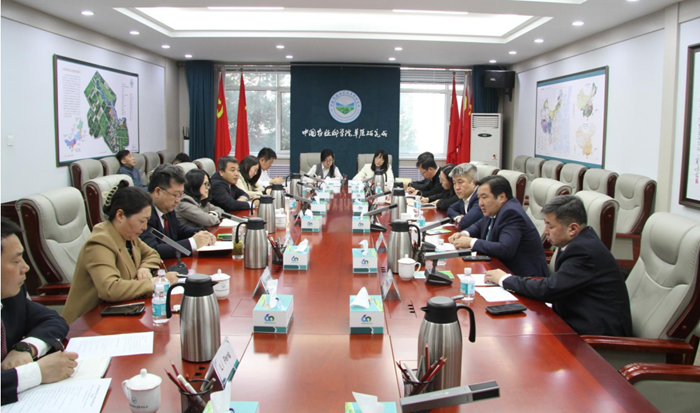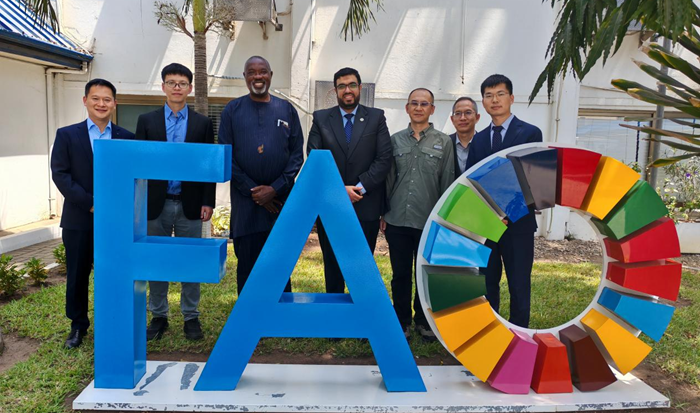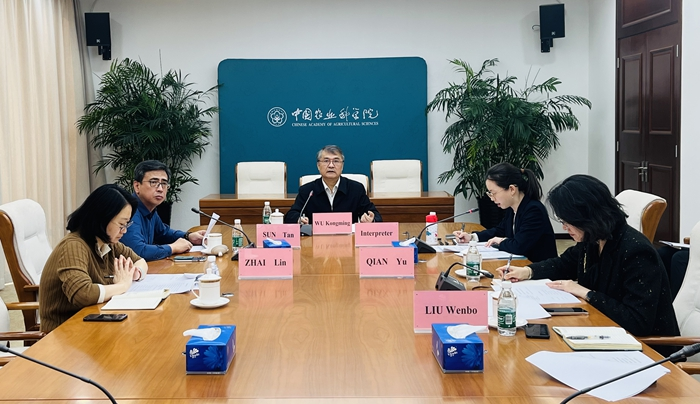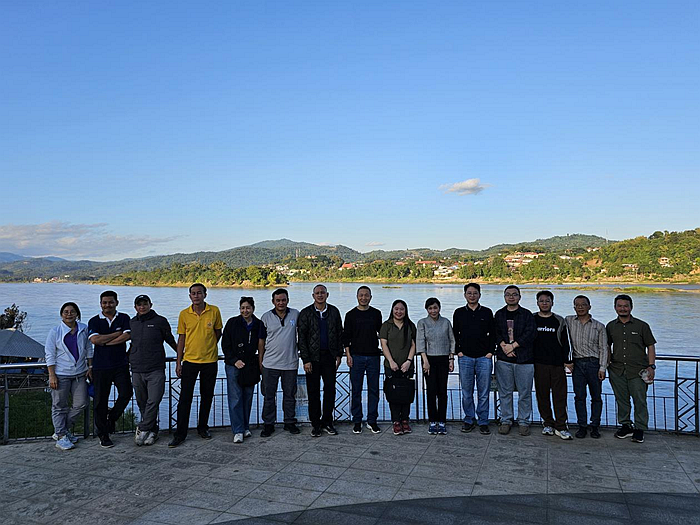Strengthening China-Mongolia Grassland Cooperation to Build a Cross-Border Green Ecological Barrier
On April 2, O. Batchuluun, the Executive Director of the Mongolian Railway State-Owned Company, D. Sereedorj, Advisor to the Executive Officer, and D. Gantulga, the Director General of the Institute of Biology of the Mongolian Academy of Sciences, visited the Institute of Grassland Research of the Chinese Academy of Agricultural Sciences (IGR-CAAS). The two sides discussed the promotion of comprehensive desertification prevention and control along the China-Mongolia railway.
Wang Chuan, Deputy Director General of IGR-CAAS, warmly welcomed the delegation led by O. Batchuluun and introduced the basic information of the Institute. He emphasized that China-Mongolia cooperation in grassland science and technology is a key component of the Belt and Road Initiative. Both sides should further review existing grassland ecological restoration technologies, focus on the ecological restoration of grasslands along the Mongolian railway, and leverage scientific and technological strength. He also stressed the importance of actively mobilizing resources from both sides, broadening the scope of cooperation, and building a cross-border ecological green barrier between China and Mongolia. The directors of five research centers presented progress in various scientific and technological fields, including grassland ecological protection and restoration, grass germplasm resource exploration and utilization, green prevention and control of grassland biosecurity, monitoring of grassland resources, early warning of forage-livestock balance, and evaluation of grassland soils. They also proposed specific intentions and pathways for cross-border cooperation between China and Mongolia.
Both sides reached several key agreements on the construction of ecological barriers on the Mongolian Plateau and signed a cooperation agreement for joint project applications. Given the severe desertification issue along the railway, the Mongolian side highly recognized the technical achievements of IGR-CAAS in ecological restoration. They look forward to constructing a long-term cooperation mechanism through joint efforts in areas such as the sharing of grass germplasm resources, cross-border pest and disease control, dynamic monitoring of grassland resources, and soil quality improvement, applying these technologies to ecological restoration efforts along the China-Mongolia grasslands. Batchuluun emphasized that the construction of an ecological corridor along the railway needs to rely on China’s technical advantages to drive regional green development. Gantulga mentioned that they would soon send staff for technical exchanges to expedite the trans-regional application of research outcomes, including ecological management of grass species, desertification control technologies, and soil microbial fertilizers.
Wang Chuan stated that this exchange has injected new momentum into cooperation between the two sides. The collaboration will rely on the railway as a key link, addressing ecological governance challenges, building ecological security barriers, and contributing to the construction of a China-Mongolia green cooperation corridor through technology sharing, talent exchanges, and joint applications for international projects.
Over 20 individuals attended the meeting, including representatives from the Mongolian Railway State-Owned Company, the Institute of Biology of the Mongolian Academy of Sciences, the research teams andadministrative departments of IGR-CAAS.

-
 Apr 03, 2025CAAS and CABI Forge a New Chapter in Strategic Cooperation
Apr 03, 2025CAAS and CABI Forge a New Chapter in Strategic Cooperation -
 Mar 21, 2025Experts from IPPCAAS Implement FAO-China South-South Cooperation Project to Advance Sustainable Fall Armyworm Management in Ghana
Mar 21, 2025Experts from IPPCAAS Implement FAO-China South-South Cooperation Project to Advance Sustainable Fall Armyworm Management in Ghana -
 Mar 13, 2025CAAS and CGIAR Deepen Strategic Cooperation
Mar 13, 2025CAAS and CGIAR Deepen Strategic Cooperation -
 Mar 11, 2025Call for Logo Design Proposals for the China-Africa Agricultural Science and Technology Innovation Alliance (CAASTIA)
Mar 11, 2025Call for Logo Design Proposals for the China-Africa Agricultural Science and Technology Innovation Alliance (CAASTIA) -
 Jan 21, 2025IAED-CAAS Delegation Visits Thailand for Scientific Cooperation
Jan 21, 2025IAED-CAAS Delegation Visits Thailand for Scientific Cooperation
